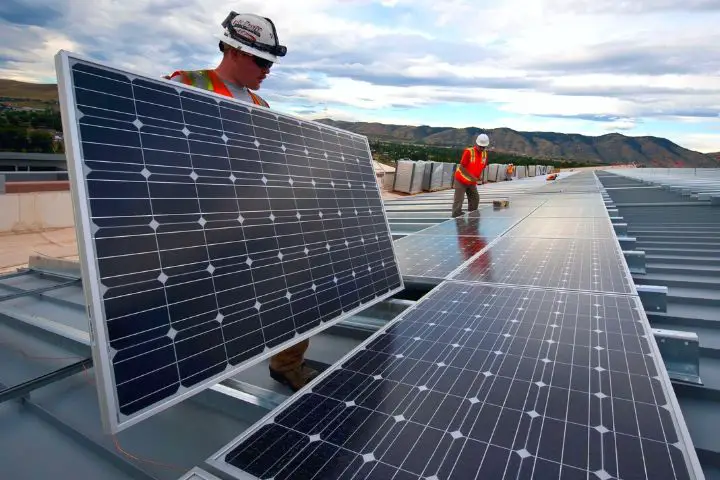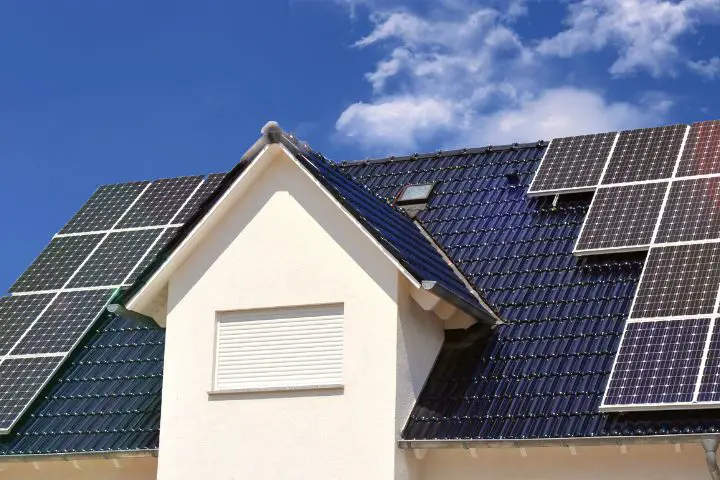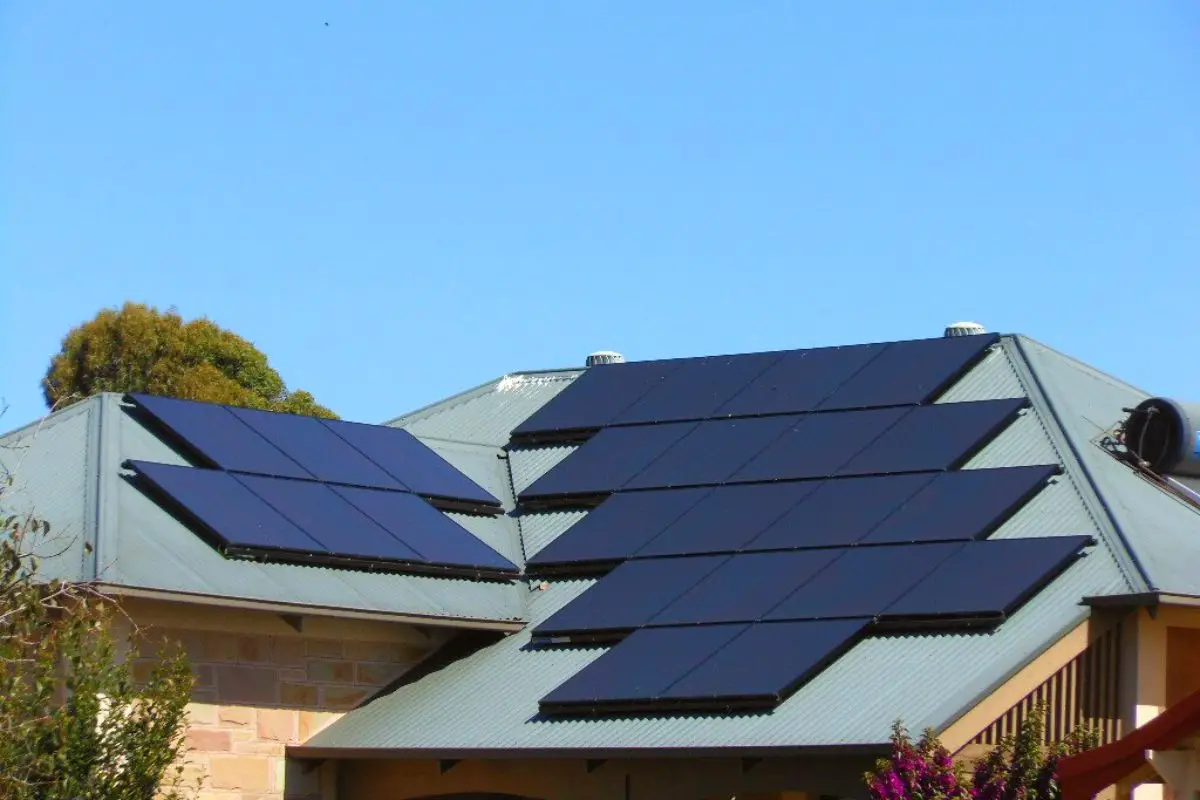Why Are Solar Panels Black – Well, they also come in blue!
If you’re looking to make some upgrades to your home, solar panels are a great place to start. Not only will they significantly reduce or completely cancel out your electricity bills, but you’d be doing a great service to the environment by reducing your carbon footprint (a great step up from metal straws and recycling!)
Solar panels are a great investment – but a pricey one too. So it’s important to know exactly what you’re getting before taking the leap.
There are two options of solar panels – black and blue. The main point of difference is the material they are made from: black ones are made from monocrystalline cells, while blue solar panels are typically from polycrystalline cells.
Related Articles: Sunrun vs Tesla Solar Panels and Sunrun vs Sunpower Solar Panels
Why Are Solar Panels Black?
No, solar panels are not painted black for the look and feel. The color of solar panels comes from the way light interacts with two different materials they are made of – monocrystalline and polycrystalline. Solar panels made from monocrystalline solar cells appear black, while solar panels made from polycrystalline give off a blue hue.
Black (Monocrystalline) Solar Panels

The silicon used to make monocrystalline (black) solar cells is a higher purity of silicon. This silicon is combined to create one large silicon crystal using a method known as the Czochralski process. Because of this single crystal form, light reflects off of the panel to give a black color.
Blue (Polycrystalline) Solar Panels
In polycrystalline solar cells, the raw silicon is melted and poured into a square mold. This manufacturing process results in the formation of many individual silicon crystals within the mold, rather than one large block. The nature of the individual crystals, along with an anti-reflective coating that is applied to improve efficiency, gives off a shiny look and blue color.
Which Solar Panels Are More Efficient
Not only are black solar panels often more efficient because black surfaces more naturally absorb light, but the shape of panels being one large single silicon crystal allows better processing of light into energy.
Because blue solar panels are multiple pieces of silicon molded together, they are less efficient at absorbing light and converting it into energy.
Which Solar Panels Are Cheaper

The manufacturing process for blue solar panels leads to less waste and energy use. They are also less efficient because the silicon is less pure and panels produced have a fragmented nature. As a result, blue solar panels are less expensive and much more widely used. In fact, about 90 percent of the solar panels on the market today are polycrystalline.
This process for making black solar panels uses a high amount of energy, making these panels more expensive to produce. Black panels are also much more efficient and the silicon used is more pure, therefore they come with a higher price tag.
Which Solar Panel Is Better For You
Both black (monocrystalline) solar panels and blue (polycrystalline) solar panels provide great energy savings and protection to the environment. That being said, they each still have their respective pros and cons.
Black solar panels are the clear winner when it comes to efficiency. The single crystal form allows for much better energy production. Because of this efficiency, you are likely to require fewer panels, making it easier to install, especially if you have limited space on your rooftop. Black panels also have a slightly longer lifespan, making it a top-notch – but very expensive – investment.
Blue solar panels are the norm because they are cheaper – they’re simpler to produce, use a less pure silicon, and are less efficient than black panels. But that is not to say they won’t get the job done, and that too at a lower up-front cost. These panels are also easier to maintain, but they will take up more space, so with less square footage above your head, you may find them difficult to install.
If you’re looking for the most cost-effective option and you can spare the space, standard blue solar panels are a great option. But if you’re willing and able to make the extra spend, black solar panels will give you better results in the long run and are the way to go.
Frequently Asked Questions

How often do solar panels require maintenance?
Solar panels require a standard annual maintenance check, along with cleaning at least twice a year. This should be more than enough to keep your panels in top energy-saving shape. Your solar panels don’t need more attention unless they start acting up. The best indicator that something is wrong is a decrease in energy output or an increase in your electricity bills. If you notice something out of place, you can schedule a maintenance check as needed.
Do I have to install my solar panels on my roof?
While the obvious choice may be to install your solar panels on the roof, this isn’t the only option. Ground-mounted solar panels are a great alternative. They’re easier to access and therefore easier to maintain, and you’re not limited by the space of your roof, which is important to consider if you’re installing blue solar panels. That being said, ground mounting tends to be more expensive for installation, and is also much less discrete – your neighbours will definitely notice the new addition to your front yard! Rooftops are more difficult to access on a regular basis, but inevitably make a suitable and subtle home for your energy savers.
Can I use solar panels if I live in a cloudy area?
You absolutely can use solar panels even if you live in a region with cloudy days! Solar panels will be more effective with greater direct sunlight, but they don’t need consistent sunlight. So as long as your panels are getting the recommended four hours of sunlight per day, which is easily achievable no matter where you are, you’re good to go! Another option is to install photovoltaic (PV) panels. These panels use photons to generate energy which are present in both direct and indirect sunlight, making your solar panels effective all year round.





